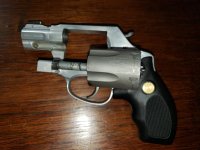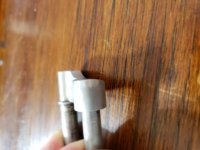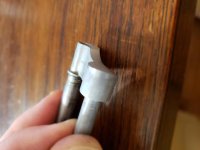False Information
Guys,
The information that most everyone in this post has responded with is simply not true. The Smith and Wesson lifetime repair policy does not apply to normal wear and tear, such as shooting the handgun. A Scandium revolver has a definite life span and it is no where near 1,000 rounds in my experience. I would estimate that I ran 500 rounds at the most through my 360SC revolver before the cylinder would simply slide backwards off of the ejector with the cylinder open.
Like you all have posted, I was under the false impression that Smith and Wesson had a lifetime guarantee on this product. I called up S&W, they sent me a prepaid shipping label to return the firearm and I sent it back, only to receive the attached letter in reply(along with my unrepaired firearm).
I was shocked at the reply I received from Smith and Wesson. I immediately looked on the internet and found this thread. Assuming that you were all putting out accurate information, I called Smith and Wesson to discuss their policy and determine why my firearm had not been repaired. Their representative, Paul (Manager), explained to me that the lifetime repair policy only covers defects in manuafacturing and in no way covers normal wear and tear from usage, I.E. FIRING the gun! He explained that the policy would only cover me if there were defects in the manufacturing process that caused the failure.
I would caution you all, if you own a scandium or Aluminum revolver from Smith and Wesson, DO NOT FIRE IT! The gun has a most distinct lifespan before it will break and it is in no way covered by Smith. I mean, they did not even offer to repair the gun for a price. Essentially I have a $900, paperweight now.
I would suggest that you buy a steel frame equivalent, of for that matter go with another brand of firearm that has a better warranty and covers their firearms to be used as they were intended. I have always loved my Smith and Wesson products, but after this experience, I may be going elsewhere with my money when I purchase my next firearm.



